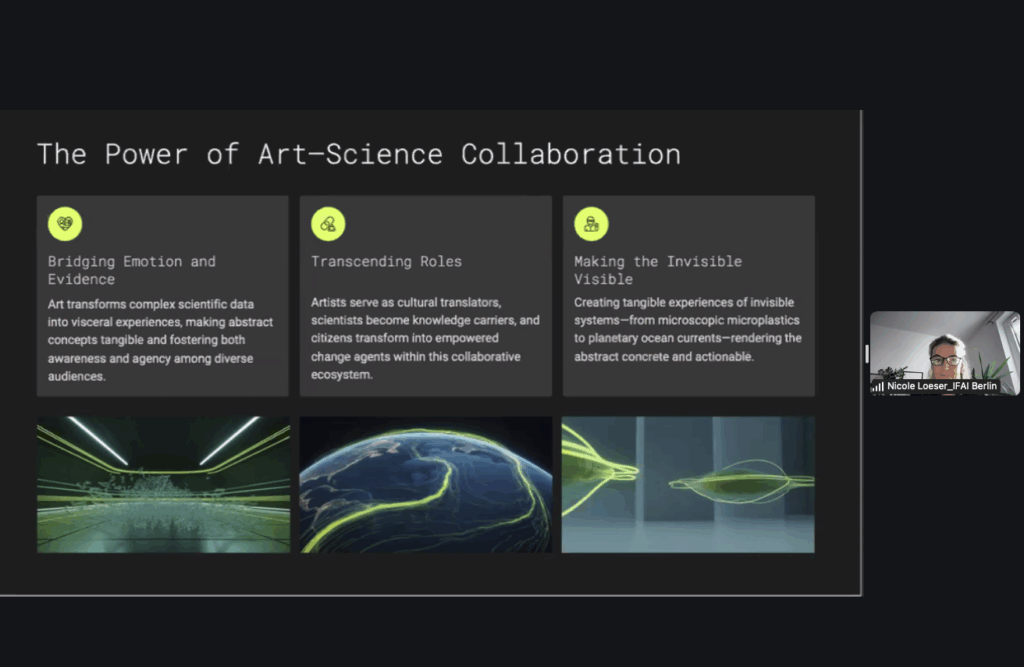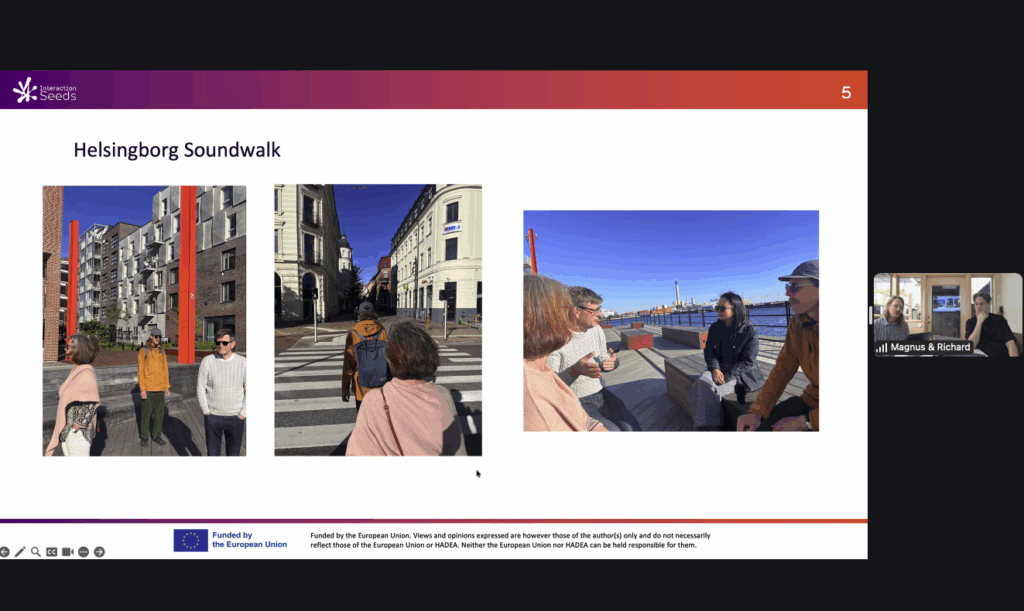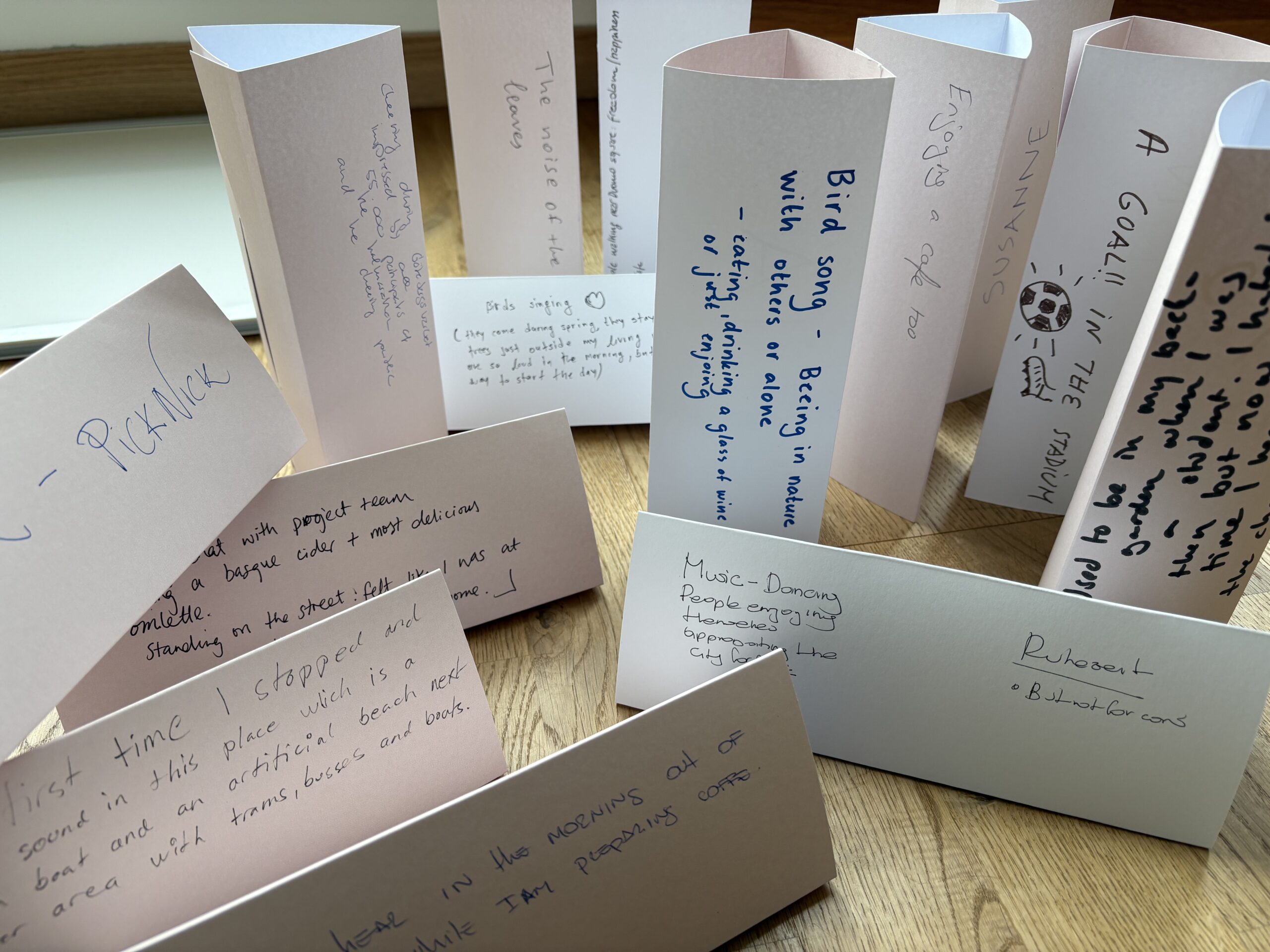How can art build the futures literacy needed to redesign systems from within? The second InteractionSeeds webinar offered four grounded answers: ocean foresight through art–science collaboration; soil literacy via artistic practice in the Basque Country; listening-led reflection on urban soundscapes in Sweden; and a civic app in Kozani that channels public perspectives into climate policy. Across these diverse contexts, one principle emerged: systemic transformation begins with relationships — linking vision, experimentation and transformation.

Ocean futures, co-created: Institute for Art and Innovation (IFAI – Berlin)
Director Nicole Hauser opened with the Ocean Future Lab, a UN Ocean Decade initiative redefining foresight as a participatory cultural process rather than a technocratic exercise. Workshops merge scientific modelling with art-based storytelling and prototyping, allowing participants to sense possible futures — from algae-powered islands to deep-sea research habitats and educational “future boxes”.
Key insight: Transformation requires systemic scaffolding — infrastructures where artists, scientists and policymakers act as co-learners. Art, Hauser noted, serves as a medium of collective sense-making that grounds institutions in both ethics and imagination.

Soil literacy through art in the Urdaibai Biosphere: “Mizelioak”
Itziar Vidaurreta from the GAIA Cluster (Basque Country) shared Mizelioak, a six-month collaboration linking fine arts students, scientists, SMEs and families to reimagine soil as a living ecosystem. Field immersions and creative workshops led to permanent artworks and a public exhibition in Bilbao and Urdaibai, complemented by educational resources and an ambient soundscape of the biosphere.
Key insight: Begin with visible indicators — dragonflies, beetles, butterflies and migratory birds — to translate soil health into relatable experiences. This approach fostered enduring community engagement and inspired co-designed, nature-based interventions in the region.

Listening to the City: The Future Sound of Cities (Helsingborg)
Magnus Eriksson (RISE) and sound artist Richard Widerberg invited citizens to rediscover their urban environment through guided sound walks. Participants moved from bustling streets to newly silent harbour areas, reflecting on how soundscapes shape emotion, memory and wellbeing.
Key insight: Active listening is a powerful civic tool. By making urban noise perceptible, sound art reveals how design choices — vehicle access, pedestrianisation, new public uses — transform not just space but the sensory fabric of everyday life.

Climate neutrality with citizens, not for them: Kozani’s Climate Swipe App
In Greece, Eri Moretti and Vasileios Aktis from CLuBE introduced the Climate Swipe App, developed within Kozani’s 2030 Climate Neutral City initiative. The simple web-based tool collects citizens’ views on energy, mobility and waste, feeding real-time insights into municipal planning and the city’s transition team.
Key insight: Participation must be visible and actionable. The app closes the loop between citizen input and policy, offering a replicable model for transparent, data-informed local governance.
Watch the whole webinar here:
Shared Learnings
- Futures literacy is tangible. When integrated with science, art enables communities to imagine and prototype alternative governance and behavioural models.
- Transdisciplinarity is practice, not theory. Effective projects give artists, researchers, policymakers and citizens shared ownership across all phases.
- Positive framing invites participation. Each initiative focused on possibility rather than loss, creating safe spaces for dialogue and experimentation.
- Replication amplifies impact. Portable, low-cost formats — from sound walks to digital surveys — make engagement scalable across Europe.
As InteractionSeeds approaches its conclusion, the webinar reaffirmed that systemic change grows through interdisciplinary infrastructures where creativity, knowledge and civic participation co-evolve. Whether sensing the ocean’s future, mapping the soil’s life, listening to cities or co-designing climate action, these initiatives show how art can help redesign systems from within.
Next Webinar: Art–Science Interactions to Boost AI Education
Wednesday 3rd December 2025 | 10:00–11:30 CET | Online via Zoom
Discover how the arts can foster AI literacy through a human-centred approach that encourages creativity, critical thinking and meaningful engagement with technology. This session will share good practices and inspiring collaborations connecting research, art and society while exploring innovative pathways for Gen-AI education.
First confirmed speakers:
- Isabelle Galy (FR) – Expert in AI acculturation and impactful interventions
- Giannis Farsaris (EL) – Computer science teacher and author
- Julie Saccomano (FR) – Consultant in Innovation Management
More speakers will be announced soon.
